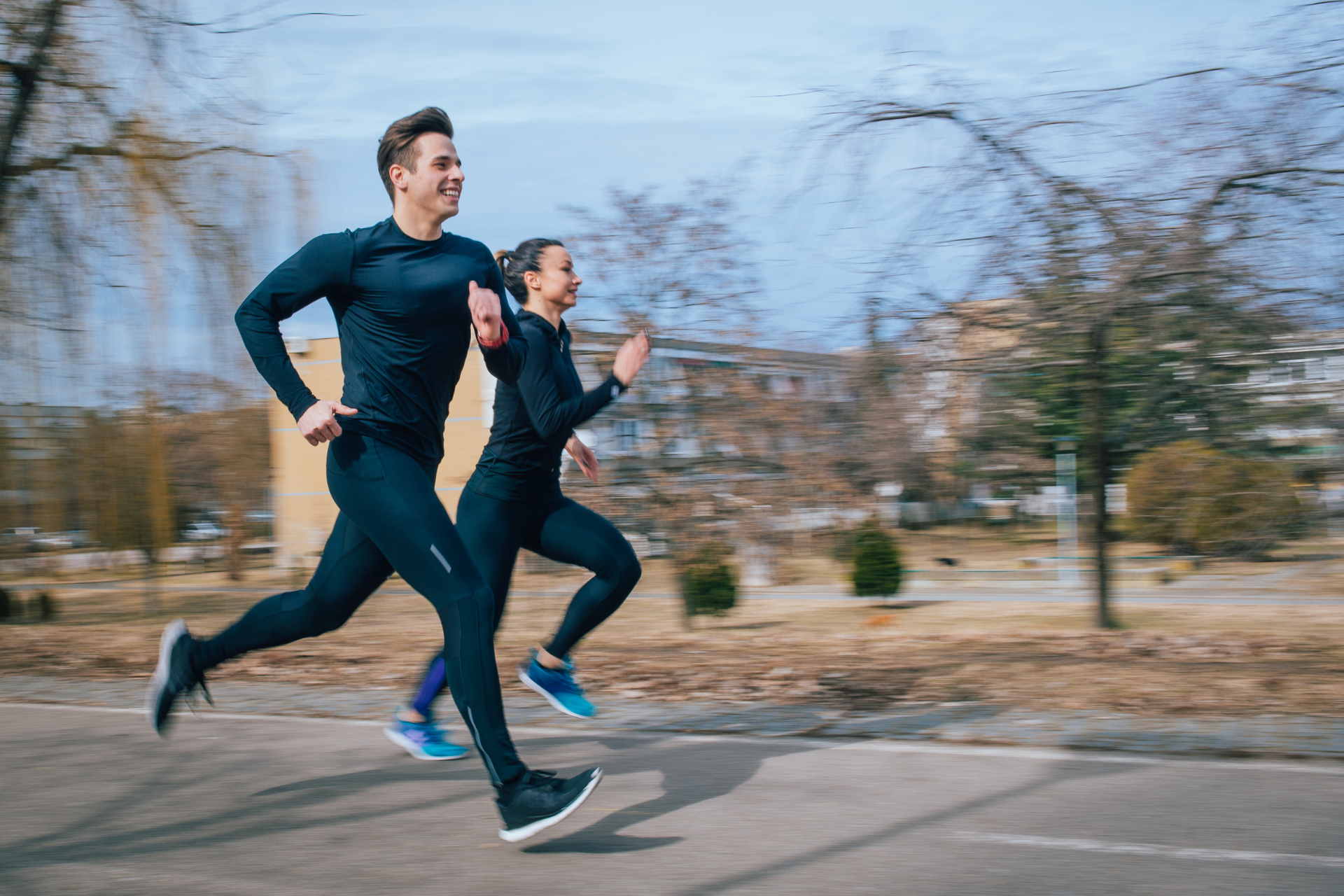Running is a great form of fitness, as no matter how good you are, you can always improve on your performance. Whether it’s beating your personal best at a 5k, or perfecting your technique for a stronger stride, it comes packed with potential for improvement.
Whether you have a need for speed, or long to do laps for longer, check out our top tips on boosting your running routine.
INCREASE THAT SPEED
TOP TEKKERS
When it comes to running, the right technique is key. Running is just, running… right? Wrong. Running with poor form is a fast road towards injury, or falling into bad habits that over time, will lead to poor posture or sore joints.
Start by keeping your head up and your face looking forwards, not down at your feet (they’re still there, you don’t need to check on ‘em!). Your shoulders should be relaxed and square, your elbows bent at 90 degrees so that your arms swing by your sides.
Foot strike is also crucial to get right. Try to land on the centre of your foot, rather than slam down on your heel, and keep your feet directly under your hips when they land. This will help you to maintain a good sense of balance and reduce the strain on your joints.
HIIT IT UP
High intensity training is a great way to improve speed. Run at a pace that gets your heart rate up for a few minutes, then switch to a slower, more comfortable jog for the same amount of it. Then step the gear back up to a faster pace. If HIIT is your thing, try our exclusive BURN workout, for some fast-paced stints on the SkillMill, to increase speed and agility.
HEAD UP HILL
Running on an incline forces your muscles to work harder, building up strength and power in your legs. Stronger legs make for more powerful running speeds. Start by running at a light pace on the treadmill, at an incline that offers enough resistance to feel that burn in your calves.
Once you’re comfortable running on that incline, increase it by a few degrees each time you hit the gym. Switch between flat, or low inclines and steeper runs regularly, to keep your body ready for running out on the road.
BEST FOOT FORWARD
Because only your Insta fans care about your fitness footwear! The right choice of shoe can make the difference between a successfully speedy sprint, and a hobbling home with a bunch of blisters.
A good set of shoes, properly designed for running will protect your ankles from injury and your feet from the shock of striking the ground. Soreness equals slowness. So if it’s speed you’re after, a good choice of shoe will keep your feet on form.
Go for something lightweight, breathable and with strong grips, to help propel you forwards as you run.
COUNT YOUR STRIDES
Sounds simple, but it’s an effective way to keep track of how fast you’re actually running, if you’re out on the road without the handy speedometer of your trusty treadmill. Counting your strides will help to increase your stride turnover (the number of steps you take every minute you run)
Have a go… run for 30 seconds at a sustainable speed count each time your right foot taps the ground. Double the number to get your overall stride turnover rate.
Each time you run, aim to improve on your turnover rate, for speedier runs.
GO THE DISTANCE
If it’s endurance you’re after, building up your ability to go for longer takes some time and a little tweak on the technique.
GRADUAL INCREASE
Plan to increase the miles you cover every week. Start small - up your distance by around 10% each week (aim for too far, too soon and you’ll cause too much strain!)
If you’re comfortable running 50km a week, increase it by 5km next week. Your body will adjust to the extra effort, over time.
GO LONG
Practice makes perfect. If you want to run for longer… run for longer! Get your body used to the feeling of being upright for long periods, and your feet acquainted with constant contact with the ground. Long runs don’t mean fast runs, so keep at a comfortable pace so that you don’t burn all of your energy before you’ve reached the end point.
Experts say to run at a pace where you can hold a conversation without too much heavy breathing. Though that’s not an excuse to couple your run with a good old phone natter!
FUEL UP
If you plan to burn energy for longer you need to refuel more often. Carry high protein snacks to top up the energy when you start to feel tired. Long distance runners often take energy bars or gels to perk up their energy levels during the race.
UP THE STRENGTH
Adding extra strength to your leg, core and back muscles is a great way to improve endurance. It’ll also help protect the body against injury if you’re planning to run long on the regular.
Les Mills Strength Development is a great shout if you’re new to strength training. Focused on Hypertrophy (the increase in muscle size), it enhances strength, endurance, and overall physical performance.
Also great, swimming and cycling - full body workouts that help improve your cardio fitness, and endurance.


